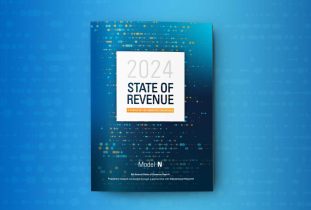With current trends, ideas and the hype machine running full throttle, there is confusion with companies as to their investment goals and priorities surrounding artificial intelligence (AI).
The recent 2020 State of Revenue Report, revealed AI is the number 1 priority from the survey of over 300 executives across high tech, semiconductor and other industries, and 82% say revenue management is increasingly difficult.
With the priorities and investments shifting from finance to marketing to sales in different organizations, how do you know if your time, resources and efforts are the right AI solution and if it’s AI at all?
“We’re pretty confident that solutions you are investing in today that are being referred to as AI or machine learning (ML) driven are far from it” shared the authors in How Intelligent is Your AI via the MIT Sloan Management Review. “The reality today for most organizations is that AI and machine learning form a rather small piece of the overall analytics pie” shared the authors.
With so much pressure to succeed and show results across key areas of your organization, how can you be sure that your approach and solution is really AI?
Here are four questions to help you assess if your solution is really AI.
- Does it use large amounts of data across a variety of formats?
- It only needs a small amount of data — probably not AI.
- It has a hard time handling unstructured or messy data, like free-form text, images, or video — probably not AI.
- It uses large amounts of data in different formats, either through manual input or automated sensors — probably AI.
2. Does it update the data it uses over time?
- The data it uses is static — probably not AI.
- It doesn’t update with new data very often — probably not AI.
- It updates itself with new data in close to real-time — probably AI
3. Does it adapt its decision-making logic over time?
- Its underlying decision-making logic doesn’t change — probably not AI.
- Its underlying decision-making logic only changes with scheduled updates — probably not AI.
- It iteratively improves its decision-making logic in close to real-time to the point that it is nearly impossible to understand how it reaches a given output — probably AI.
4. Does it adjust for possible biases?
- It doesn’t attempt to assess or measure potential biases — probably not AI.
- It doesn’t automatically adjust for biases, even if it sees them — probably not AI.
- It proactively measures and adjusts for potential biases — probably AI.
Look for upcoming points of view on AI/ML and how Model N is bringing real-time intelligence to revenue management in the areas of deal, quoting and channels for high tech companies. To learn more about Model N, go here. To read more from MIT Sloan on Artificial Intelligence, go here.
















